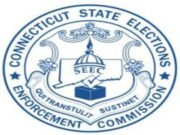
Our new name, the Institute for Free Speech, is almost self-explanatory. What may be less clear to a casual observer is the Institute’s choice of logo, a lantern.
Imagery that features flames can symbolize many different things: enlightenment, liberty, or even passion. These are all concepts we are eager to invoke. But the Institute’s lantern comes with a historical background too.
The story begins with the Liberty Tree, which grew in Boston from 1646 until 1775, when the British Army chopped it down. That famous elm tree was the site of numerous meetings and protests, especially against the hated Stamp Act in 1765, which imposed taxes on newspapers, pamphlets, other publications, documents, and even playing cards. The tree came to be seen as a symbol of freedom and revolt and spread to the other American colonies, which dedicated their own liberty trees in the years leading up to the American Revolution.
The organized protests against the Stamp Act led to its repeal, a testament to the power of political speech and an engaged populace. Bostonians celebrated the repeal by hanging lanterns on the Liberty Tree: first 45 (a number symbolizing free speech after a member of Parliament was jailed for criticizing the king in 1763 in the 45th issue of the newspaper he published), then 108 the next night (the margin by which the British House of Commons voted to repeal the Act), then as many as could fit on the branches. Today, one of those original lanterns is housed in Boston’s Old State House by the Bostonian Society.
Subsequent examinations of the lanterns suggest that they were made by local craftsmen using materials imported from Britain. During the Stamp Act protests, local vendors were urged to boycott the importation of British goods, although trade soon flowed freely after the Act’s repeal. This sequence of events and the composition of the lanterns suggest that, although American colonists bitterly protested the law, they still considered themselves to be loyal British subjects, deeply connected with British society and commerce.
The story of the Liberty Tree and its lanterns illustrates the importance of free speech. Although legal protections for free speech for those living in the American colonies would not be codified until decades later in the Constitution and the First Amendment, those principles were still vital for colonial self-government. The absence of an independent country to call their own did not dissuade the colonists from declaring that their “unalienable rights” as British citizens were being violated. The freedom to assemble, petition the government, and express opinions about controversial topics are central components of a free society. They exist even without explicit recognition from the government or a First Amendment to guarantee them.
American colonists protested the Stamp Act through a variety of methods: public protest, anonymous writings, and economic activity, to name just a few. Those same methods are no less relevant today than they were 250 years ago. The Institute for Free Speech exists to boldly defend the fundamental rights of speech, assembly, press, and petition, even as some discount or forget their importance. The lantern in our logo represents the freedom to express ideas, the knowledge that is revealed through open debate, the ability to organize into groups, and the passion for liberty that drives us. Without those things, free self-governance is impossible.














